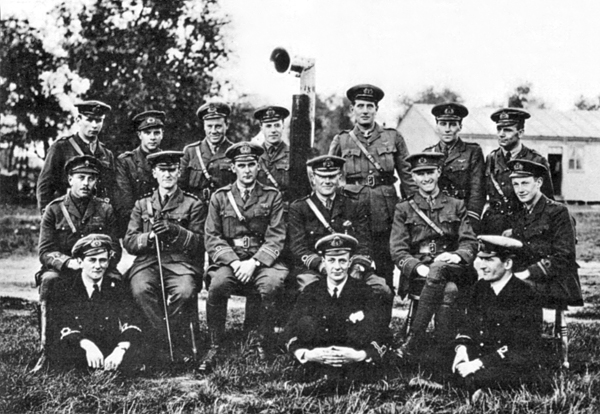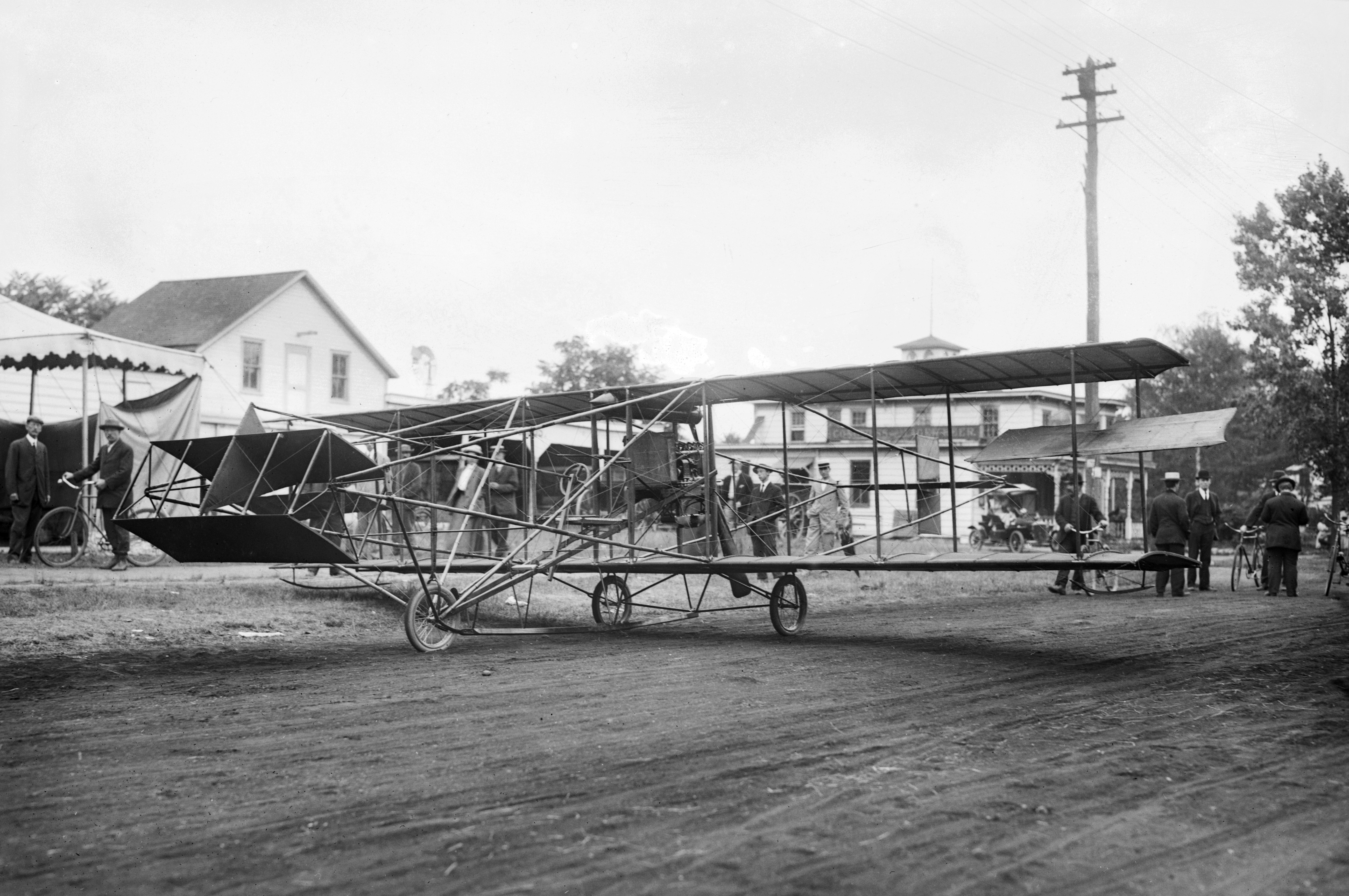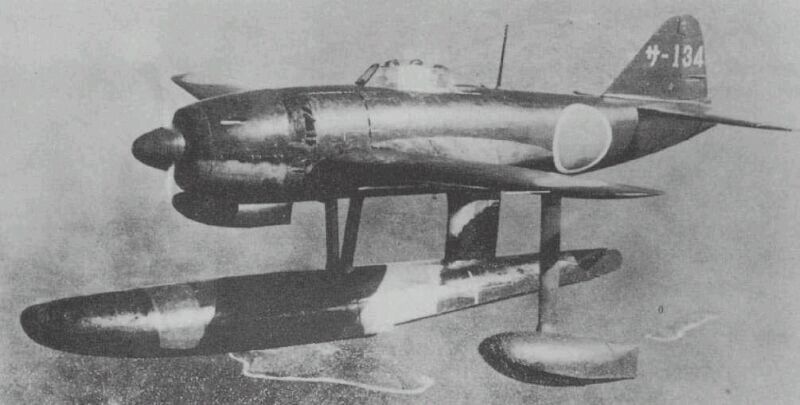|
Imperial Japanese Navy Air Corps
The was the air arm of the Imperial Japanese Navy (IJN). The organization was responsible for the operation of naval aircraft and the conduct of aerial warfare in the Pacific War. The Japanese military acquired their first aircraft in 1910 and followed the development of air combat during World War I with great interest. They initially procured European aircraft but quickly built their own and launched themselves onto an ambitious aircraft carrier building program. They launched the world's first purpose-built aircraft carrier, , in 1922. Afterwards they embarked on a conversion program of several excess battlecruisers and battleships into aircraft carriers. The IJN Air Service had the mission of national air defence, deep strike, naval warfare, and so forth. It retained this mission to the end. The Japanese pilot training program was very selective and rigorous, producing a high-quality and long-serving pilot corps, who were very successful in the air during the early par ... [...More Info...] [...Related Items...] OR: [Wikipedia] [Google] [Baidu] |
Rising Sun Flag
The is a Japanese flag that consists of a red disc and sixteen red rays emanating from the disc. Like the Japanese national flag, the Rising Sun Flag symbolizes the sun. The flag was originally used by feudal warlords in Japan during the Edo period (1603–1868 CE). On May 15, 1870, as a policy of the Meiji government, it was adopted as the war flag of the Imperial Japanese Army, and on October 7, 1889, it was adopted as the naval ensign of the Imperial Japanese Navy. At present, the flag is flown by the Japan Maritime Self-Defense Force, and an eight-ray version is flown by the Japan Self-Defense Forces and the Japan Ground Self-Defense Force. The rising sun design is also seen in numerous scenes in daily life in Japan, such as in fishermen's banners hoisted to signify large catches of fish, flags to celebrate childbirth, and in flags for seasonal festivities. The flag is controversial in Korea and China, where it is associated with Japanese militarism and imperialism. ... [...More Info...] [...Related Items...] OR: [Wikipedia] [Google] [Baidu] |
Battleship
A battleship is a large armored warship with a main battery consisting of large caliber guns. It dominated naval warfare in the late 19th and early 20th centuries. The term ''battleship'' came into use in the late 1880s to describe a type of ironclad warship,Stoll, J. ''Steaming in the Dark?'', Journal of Conflict Resolution Vol. 36 No. 2, June 1992. now referred to by historians as pre-dreadnought battleships. In 1906, the commissioning of into the United Kingdom's Royal Navy heralded a revolution in the field of battleship design. Subsequent battleship designs, influenced by HMS ''Dreadnought'', were referred to as "dreadnoughts", though the term eventually became obsolete as dreadnoughts became the only type of battleship in common use. Battleships were a symbol of naval dominance and national might, and for decades the battleship was a major factor in both diplomacy and military strategy.Sondhaus, L. ''Naval Warfare 1815–1914'', . A global arms race in battleship cons ... [...More Info...] [...Related Items...] OR: [Wikipedia] [Google] [Baidu] |
Royal Naval Air Service
The Royal Naval Air Service (RNAS) was the air arm of the Royal Navy, under the direction of the Admiralty's Air Department, and existed formally from 1 July 1914 to 1 April 1918, when it was merged with the British Army's Royal Flying Corps to form the Royal Air Force (RAF), the world's first independent air force. It was replaced by the Fleet Air Arm, initially consisting of those RAF units that normally operated from ships, but emerging as a separate unit similar to the original RNAS by the time of World War 2. Background In 1908, the British Government recognised the military potential of aircraft. The Prime Minister of the United Kingdom, Prime Minister, H. H. Asquith, approved the formation of an "Advisory Committee for Aeronautics" and an "Aerial Sub-Committee of the Committee of Imperial Defence". Both committees were composed of politicians, British Army, army officers and Royal Navy officers. On 21 July 1908 Captain Reginald Bacon, who was a member of the Aerial Na ... [...More Info...] [...Related Items...] OR: [Wikipedia] [Google] [Baidu] |
Yokosuka
is a city in Kanagawa Prefecture, Japan. , the city has a population of 409,478, and a population density of . The total area is . Yokosuka is the 11th most populous city in the Greater Tokyo Area, and the 12th in the Kantō region. The city is host to United States Fleet Activities Yokosuka. Geography Yokosuka occupies most of Miura Peninsula, and is bordered by the mouth of Tokyo Bay to the east and Sagami Bay on the Pacific Ocean on the west. Surrounding municipalities * Kanazawa-ku, Yokohama * Miura * Hayama * Zushi History Pre-modern period Archaeologists have found stone tools and shell middens from the Japanese Paleolithic period and ceramic shards from the Jōmon and Kofun periods at numerous locations in the area. During the Heian period, local warlord Muraoka Tamemichi established Kinugasa Castle in 1063. He became the ancestor of the Miura clan, which subsequently dominated eastern Sagami Province for the next several hundred years. The Miura clan supported ... [...More Info...] [...Related Items...] OR: [Wikipedia] [Google] [Baidu] |
Maurice Farman
Maurice Alain Farman (21 March 1877 – 25 February 1964) was a British-French Grand Prix motor racing champion, an aviator, and an aircraft manufacturer and designer. Biography Born in Paris to English parents, he and his brothers Richard and Henry Farman were important pioneers of aviation in Europe. A champion tandem cyclist with brother Henry, Maurice Farman began racing Panhard automobiles and won the 1901 Pau Grand Prix, the first race ever to be called a Grand Prix. In May 1902 he won the "Circuit du Nord" race from Paris to Arras and back. He also competed in that year's Paris to Vienna race won by Marcel Renault. However, Farman's interest quickly turned to powered flight and in 1908 he bought a Voisin Model 4 biplane. In 1909 he set world's endurance and speed records. He soon began to manufacture airplanes and in 1912 merged his business with his brother's aircraft company to give the Farman Aviation Works Farman Aviation Works (french: Avions Farman) was a Fren ... [...More Info...] [...Related Items...] OR: [Wikipedia] [Google] [Baidu] |
Hammondsport
Hammondsport is a village at the south end of Keuka Lake, in Steuben County, one of the Finger Lakes of New York, United States. The Village of Hammondsport is in the Town of Urbana and is northeast of Bath. History Lazarus Hammond founded the village around 1827. The village was incorporated in 1856. The village later became a center for the New York wine industry. The American motorcycle designer and manufacturer, and recognized expert on gasoline engines Glenn Hammond Curtiss resided at Hammondsport, where he was born in 1878. Early development of aircraft and seaplanes was carried out at Hammondsport by Curtiss who had joined with Alexander Graham Bell and others in the Aerial Experiment Association. In 1921, five local men purchased a wood barrel factory just south of the present D.W. Putnam Wine Company, and named it the Aerial Service Corporation. Two of these men, Henry Kleckler, the president and William Chadeayne, vice president, were formerly with the Curtiss Aer ... [...More Info...] [...Related Items...] OR: [Wikipedia] [Google] [Baidu] |
Curtiss Aeroplane And Motor Company
Curtiss Aeroplane and Motor Company (1909 – 1929) was an American aircraft manufacturer originally founded by Glenn Hammond Curtiss and Augustus Moore Herring in Hammondsport, New York. After significant commercial success in its first decades, it merged with the Wright Aeronautical to form Curtiss-Wright Corporation. History Origin In 1907, Glenn Curtiss was recruited by the scientist Dr. Alexander Graham Bell as a founding member of Bell's Aerial Experiment Association (AEA), with the intent of establishing an aeronautical research and development organization. According to Bell, it was a "co-operative scientific association, not for gain but for the love of the art and doing what we can to help one another."Milberry 1979, p 13. In 1909, shortly before the AEA was disbanded, Curtiss partnered with Augustus Moore Herring to form the Herring-Curtiss Company.Gunston 1993, p. 87. It was renamed the Curtiss Aeroplane Company in 1910 and reorganized in 1912 after being taken- ... [...More Info...] [...Related Items...] OR: [Wikipedia] [Google] [Baidu] |
Seaplane
A seaplane is a powered fixed-wing aircraft capable of takeoff, taking off and water landing, landing (alighting) on water.Gunston, "The Cambridge Aerospace Dictionary", 2009. Seaplanes are usually divided into two categories based on their technological characteristics: floatplanes and flying boats; the latter are generally far larger and can carry far more. Seaplanes that can also take off and land on airfields are in a subclass called amphibious aircraft, or amphibians. Seaplanes were sometimes called ''hydroplanes'', but currently this term applies instead to Hydroplane (boat), motor-powered watercraft that use the technique of Planing (boat), hydrodynamic lift to skim the surface of water when running at speed. The use of seaplanes gradually tapered off after World War II, partially because of the investments in airports during the war but mainly because landplanes were less constrained by weather conditions that could result in sea states being too high to operate seaplan ... [...More Info...] [...Related Items...] OR: [Wikipedia] [Google] [Baidu] |
Wakamiya
Wakamiya may refer to: Places *Wakamiya, Fukuoka, a town located in Kurate District, Fukuoka Prefecture, Japan that in 2006, along with the town of Miyata (also from Kurate District), was merged to create the city of Miyawaka *Wakamiya Station, a railway station on the Tadami Line in the town of Aizubange, Fukushima Prefecture, Japan, operated by East Japan Railway Company (JR East). *Keta Wakamiya Shrine, a Shinto shrine located in the city of Hida, Gifu Prefecture, Japan also commonly referred to as "Sugimoto-sama" *Wakamiya Ōji, a 1.8 km street in Kamakura, a city in Kanagawa Prefecture in Japan, unusual because it is at the same time the city's main avenue and the approach (sandō (参道)) of its largest Shinto shrine, Tsurugaoka Hachiman-gū People *Kenji Wakamiya (born 1961), Japanese politician, a member of the House of Representatives in the Diet (national legislature). Ships and carriers * , a seaplane carrier of the Imperial Japanese Navy and the first Japanese aircraft ... [...More Info...] [...Related Items...] OR: [Wikipedia] [Google] [Baidu] |
Fleet Air Arm
The Fleet Air Arm (FAA) is one of the five fighting arms of the Royal Navy and is responsible for the delivery of naval air power both from land and at sea. The Fleet Air Arm operates the F-35 Lightning II for maritime strike, the AW159 Wildcat and AW101 Merlin for commando and anti-submarine warfare and the BAE Hawk as an aggressor. The Fleet Air Arm today is a predominantly rotary force, with helicopters undertaking roles once performed by biplanes such as the Fairey Swordfish. The Fleet Air Arm was formed in 1924 as an organisational unit of the Royal Air Force, which was then operating the aircraft embarked on RN ships—the Royal Naval Air Service having been merged with the Army's Royal Flying Corps in 1918 to form the Royal Air Force—and did not come under the direct control of the Admiralty until mid-1939. During the Second World War, the Fleet Air Arm operated aircraft on ships as well as land-based aircraft that defended the Royal Navy's shore establishments a ... [...More Info...] [...Related Items...] OR: [Wikipedia] [Google] [Baidu] |
Royal Navy
The Royal Navy (RN) is the United Kingdom's naval warfare force. Although warships were used by English and Scottish kings from the early medieval period, the first major maritime engagements were fought in the Hundred Years' War against France. The modern Royal Navy traces its origins to the early 16th century; the oldest of the UK's armed services, it is consequently known as the Senior Service. From the middle decades of the 17th century, and through the 18th century, the Royal Navy vied with the Dutch Navy and later with the French Navy for maritime supremacy. From the mid 18th century, it was the world's most powerful navy until the Second World War. The Royal Navy played a key part in establishing and defending the British Empire, and four Imperial fortress colonies and a string of imperial bases and coaling stations secured the Royal Navy's ability to assert naval superiority globally. Owing to this historical prominence, it is common, even among non-Britons, to ref ... [...More Info...] [...Related Items...] OR: [Wikipedia] [Google] [Baidu] |
Kawanishi N1K
The Kawanishi N1K ''Kyōfū'' (, "Strong Wind", Allied reporting name "Rex") is an Imperial Japanese Navy floatplane fighter. The Kawanishi N1K-J ''Shiden'' (, "Violet Lightning") was an Imperial Japanese Navy Air Service land-based version of the N1K. Assigned the reporting name "George", the N1K-J was considered by both its pilots and opponents to be one of the finest land-based fighters flown by the Japanese during World War II. The ''Shiden Kai'' possessed heavy armament, as well as surprisingly good maneuverability, due to a mercury switch that automatically extended the flaps during turns. These "combat" flaps created more lift, thereby allowing tighter turns. Unlike the Mitsubishi A6M Zero, the ''Shiden Kai'' could compete against the best late-war Allied fighters, such as the F6F Hellcat, F4U Corsair, and P-51 Mustang. Design and development Kawanishi's N1K was originally built as a single pontoon floatplane fighter to support forward offensive operations where no ... [...More Info...] [...Related Items...] OR: [Wikipedia] [Google] [Baidu] |




